Trim Clips
Trimming adjusts where two clips touch. Editing builds the story. Trimming makes it perfect. You’ll spend far more time trimming than editing; it’s that important.
223. Trimming Basics
Here’s how to trim an edit point.
An edit point is where two clips touch. It has three sides: the Out of the outgoing clip, the In of the incoming clip, and both the In and the Out.
To trim an edit point, do one of the following:
Select the Arrow (Select) tool (shortcut: A) and drag either the Out or the In; see FIGURE 4.27. This is a ripple trim; because it adjusts one side of the edit, its effect ripples through the rest of the timeline.

FIGURE 4.27 Trim the Out of the outgoing clip by dragging with the Arrow tool.
Select the Trim tool (shortcut: T) and drag both the Out and In at the edit point. This is called a roll trim; because it adjusts both sides of the edit, it rolls the edit point to a new location.
As you drag, the numbers above the edit point indicate current timecode (left) and the amount the selected frame or edit point moves during the trim. In addition to dragging, there are several keyboard shortcuts you can use to trim. Put the playhead (skimmer) at the edit point you want to adjust and do the following:
Press left square bracket to select the Out.
Press right square bracket to select the In.
Press backslash [\] to select both the In and the Out.
Press comma [,] to move the selected edit point one frame left.
Press period [.] to move the selected edit point one frame right.
Press Shift+, to move the selected edit point ten frames left.
Press Shift+. to move the selected edit point ten frames right.
With an edit point selected in the timeline:
Press + [plus] to switch the timecode display into data-entry mode and tell FCP you intend to move the selection to the right.
Or—press – [minus] to switch the timecode display into data-entry mode and tell FCP you intend to move the selection to the left.
Enter the number of seconds and/or frames you want the selected object to move.
Press Return to apply the shift.
As long as a selected edit point has sufficient handles and is not blocked by another nonselected clip, it will instantly move. For example:
Type +16 then press Return to move the selection 16 frames to the right.
Type –8 then press Return to move the selection 8 frames to the left.
224. Handles Are Essential for Trimming
Handles are extra video at the ends of a clip.
Handles are extra media before the In or after the Out. They are essential for trimming and transitions, because if you need to move the In earlier or the Out later, you need extra media to do so.
Final Cut alerts you whether the end of a clip (either In or Out) has handles; see FIGURE 4.28. If the selected end of a clip is yellow, there are additional frames beyond the edit point. If the edge is red, that is the end of the clip.
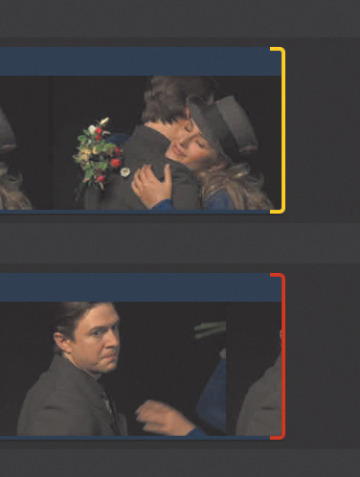
FIGURE 4.28 A red bracket means no handles. A yellow bracket indicates handles.
225. Trim the Top and Tail of a Clip
Sometimes you just need something quick and dirty.
If the deadline were any closer, it would be sitting in your lap. All you need is to trim the beginning and end of a timeline clip and export it. There’s no time to drag anything. For greatest speed, use the skimmer to hover over the trim point. Don’t click anything.
The whole process takes mere seconds from trim to export with exporting happening in the background. TABLE 4.1 lists these shortcuts.
TABLE 4.1 Top and tail trimming shortcuts
SHORTCUT |
WHAT IT DOES |
|---|---|
Option+[ |
Trim the start of a clip to the playhead (skimmer). |
Option+] |
Trim the end of a clip to the playhead (skimmer). |
Option+\ |
Trim the clip to the selected range. (This requires using the Range tool to set a range.) |
Cmd+E |
Export the clip to the default destination. |
226. The Hidden Precision Editor
The Precision Editor is an incredible teaching tool.
If editing and trimming are new to you, the Precision Editor is an interactive way to learn and develop your trimming skills. To open it, double-click any edit point; see FIGURE 4.29. The edit point opens with the outgoing clip on top.
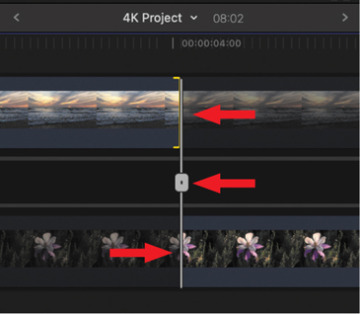
FIGURE 4.29 The Precision Editor. The Out is selected in the top layer.
To adjust the Out, drag the top edit point (top arrow). This creates a ripple trim.
To adjust the In, drag the bottom edit point (bottom arrow). This, too, creates a ripple trim.
To adjust both the In and the Out, drag the gray box control between the layers (middle arrow). This creates a roll edit.
The darker areas at the end of each clip indicate the amount of handles, or extra video, before the In or after the Out.
A selected clip edge that’s yellow means the clip has handles. A red edge means no handles.
To exit the Precision Editor, press Esc, or double-click the middle roll trim icon (middle arrow).
This is a great teaching tool to learn what happens during a trim and the importance of handles for effective trimming.
227. The Trim Edit Window
Provides feedback on what you are doing in the timeline.
The Trim Edit window appears only if you enable Preferences > Editing > Show detailed trimming feedback; see FIGURE 4.30.
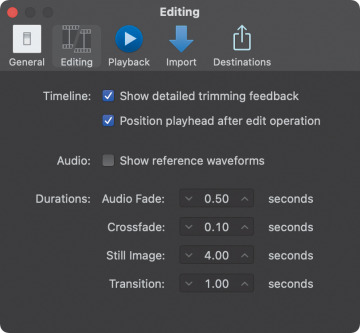
FIGURE 4.30 Preferences > Playback.
When you grab the edge of a clip with either the Select (Arrow) or Trim tool and drag, the Trim Edit window appears; see FIGURE 4.31.
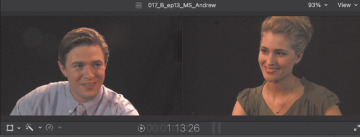
FIGURE 4.31 The Trim Edit window. The Out is on the left; the In is on the right.
The left side of the window shows the Out at the edit point. The right window shows the In at the edit point. As you drag the selected portion of the edit point, this window shows what’s changing.
If “Show detailed trimming feedback” is not selected in Editing > Preferences, Final Cut displays only the frame you are adjusting. I prefer seeing both windows, which is why I turn this preference on. It is much easier to trim using the Trim Edit window. (See Tip 70, Optimize Editing Preferences.)
228. A Super-Fast Trimming Shortcut
This keyboard shortcut is a high-speed trimming tool.
Sometimes, you just want to move the selected edit point somewhere else. Quickly.
Select the side of the edit point you want to move.
Position the playhead (skimmer) where you want it to go.
Press Shift+X.
This technique is called an extend edit. The selected edit point jumps to the playhead, provided there are sufficient handles on the clip you are trimming and that the move is not blocked by another clip. I use this all the time for adjusting title durations, roll trims, and adjustment layers.
229. Split Edits: The Workhorse of Editing
Split edit: When audio and video edit points occur at different times.
Without question, to me, the most important trim is a split edit; see FIGURE 4.32. This is where the audio and video edit points occur at different times. Split edits are generally created in the Primary Storyline.
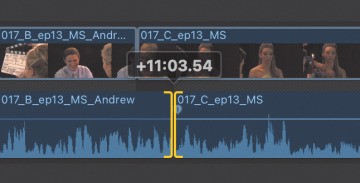
FIGURE 4.32 A split edit with the audio edit rolled to the right of the video edit.
Tip 305, Split Trims Edit Audio Separately, shows how to do this in detail. I mention it here because it is relevant to editing and trimming.
230. Enable Clip Skimming
Clip skimming is a fast way to review a timeline clip.
Turn skimming off (S). Put the cursor inside a timeline clip, and drag. Nothing happens.
Press Option+Cmd+S. Now drag the cursor inside a timeline clip. See how quickly you can see the contents of that timeline clip in the Viewer?
Why would you do this? Imagine you have multiple clips stacked vertically with an effect that blocks most of those clips (a very typical effect, by the way). Clip skimming displays a clip even if it is blocked by another clip on a higher layer.
There’s no need to use this technique if you have only one layer of timeline clips.
231. How to Use Audio Clip Skimming
Clip skimming enables audio review in high speed.
You first met skimming in Chapter 2, “The Final Cut Pro Interface.” Audio clip skimming is a special form of clip skimming. It’s a fast way to review a single audio clip, without hearing any other audio clips above or below it. It lets you zero in on the sound from a specific clip.
Choose View > Clip Skimming.
Or—press Shift+S.
Drag the cursor across the clip in the timeline you want to hear.
Repeat the same keystrokes to turn clip skimming off.
232. A Slip Trim Optimizes B-Roll
Slip trim: Adjust content without changing location or duration.
Another hidden trimming tool that I can’t live without is the Slip tool. This tool adjusts the content of a shot, moving it earlier or later, without altering the clip location in the timeline or the clip duration. It’s like a window in a wall. You can’t change the size or position of the window, but by shifting your position, you can change the view.
Select the Trim tool (shortcut: T).
Click in the middle of the clip you want to adjust.
Drag left or right.
The Trim Edit window opens up and displays the In of the slipping clip on the left and the Out on the right.
I use this constantly to find the best piece of B-roll that fits a precise duration and location.
I set the timing of a clip during the edit. I adjust the content once it’s in the timeline using a slip trim until I find the content that works best for my story.

